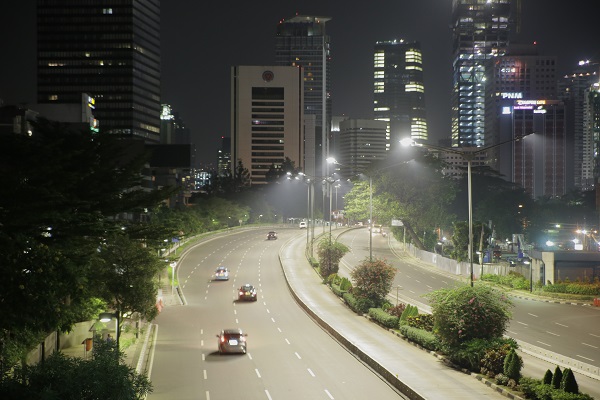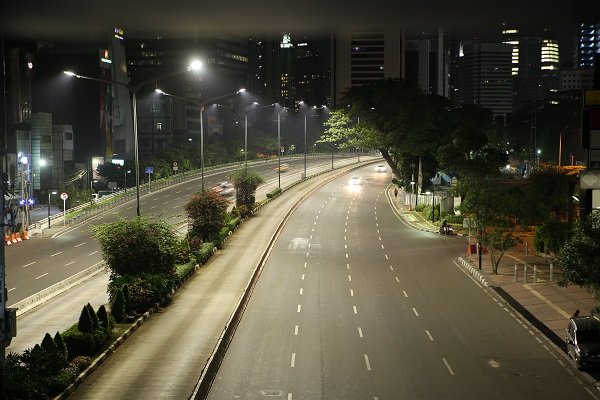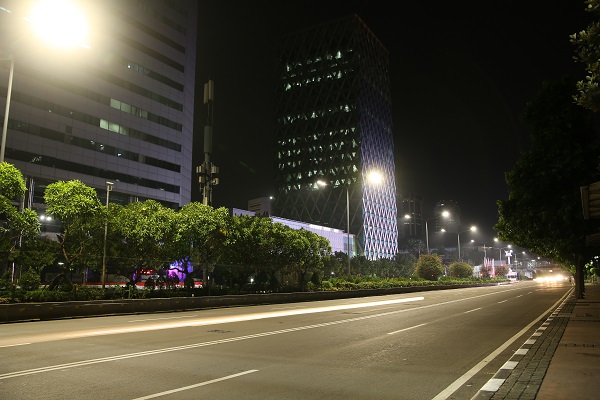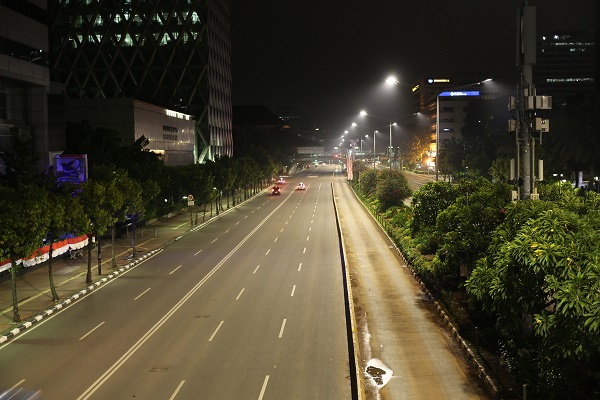Philips Lighting, a global leader in lighting, announced a city-wide upgrade of Jakarta’s street lighting. The project, a significant milestone in Jakarta’s ongoing transformation into a smart city, involves upgrading nearly 90,000 street luminaires with energy efficient LED lights connected to a Philips CityTouch lighting management system. The project is on target for completion in only seven months with approximately 430 light points being connected per day. This makes it the world’s fastest street lighting retrofit and remote management project undertaken to date.
 |
|
Philips Lighting has lit up Indonesian capital Jakarta with 90,000 LED streetlights similar to those seen in this photo. (All photos courtesy of Philips) |
“During the last few years, we have focused on urgently improving public services including street lighting. Our aim is to turn Jakarta into a smart city where everything is connected to enable our citizens to live safely and more comfortably in a city that is beautiful day and night. At the same time, we are convinced that connected lighting will help us reduce our energy expenses and improve public services,” according to the DKI Jakarta Government Office. “This is not the first project with Philips Lighting, since we have previously partnered on other lighting projects, including the illumination of the Jakarta National Monument (Monas), the iconic Tugu Selamat Datang (Welcome Monument) in the Hotel Indonesia Roundabout and various public spaces or parks.”
 |
|
Philips Lighting has rolled out a 90,000 LED streetlight upgrade using its Philips CityTouch lighitng management system in Jakarta. |
With over nine million inhabitants, Jakarta is one of the world’s most populous and fastest growing urban centers. Before the project, the city’s streets and public areas relied almost entirely on conventional lighting technology with no remote monitoring capabilities. The key benefit of Philips CityTouch is that each light point is connected and performance data will be sent through existing cellular networks to the city’s lighting office (Industry & Energy Department) or operator. The data will enable the city officials to efficiently monitor the city’s lighting infrastructure and remotely manage illumination levels to match different needs by the district. For example, in the evening when traffic is low, Jakarta’s lighting office can dim the lighting by 50 percent, resulting in additional energy savings.
 |
|
Jakarta streets look brighter with the newly installed LED streetlights. |
“Since its launch in 2012, our Philips CityTouch street lighting system has been installed in over 700 projects across 35 countries. Governments have set a high priority on reducing their carbon footprint by upgrading their street lighting with our highly energy-efficient connected lighting. Installation is quick due to our built-in wireless networking capability, and maintenance time is significantly reduced because each street light reports on its performance and status,” said Chandra Vaidyanathan, President Director, Philips Lighting in Indonesia. “Only two percent of the world’s 300 million street lights are connected in this way. The forward-thinking smart city plan for Jakarta is setting the pace for Southeast Asia.”
 |
|
An empty Jakarta street illuminated with Philips intelligent LED streetlights. |
Although the Jakarta installation is one of the largest in the world, Philips CityTouch technology can be also scaled to deliver significant benefits for small- or medium-sized conurbations. The combination of LED luminaires and remote monitoring using the Philips CityTouch lighting management system enables energy and operational savings.





 CN
TW
EN
CN
TW
EN









